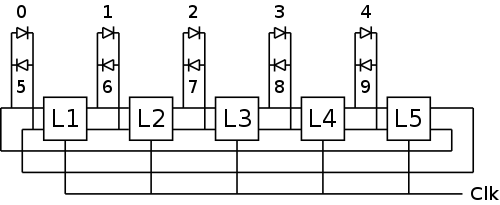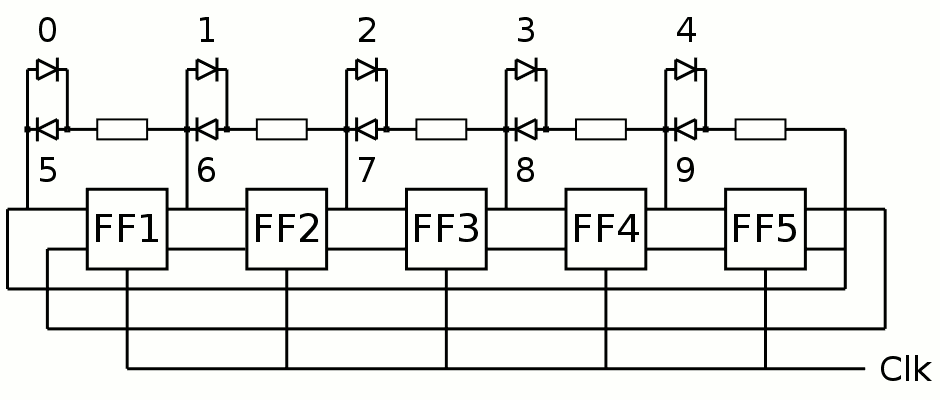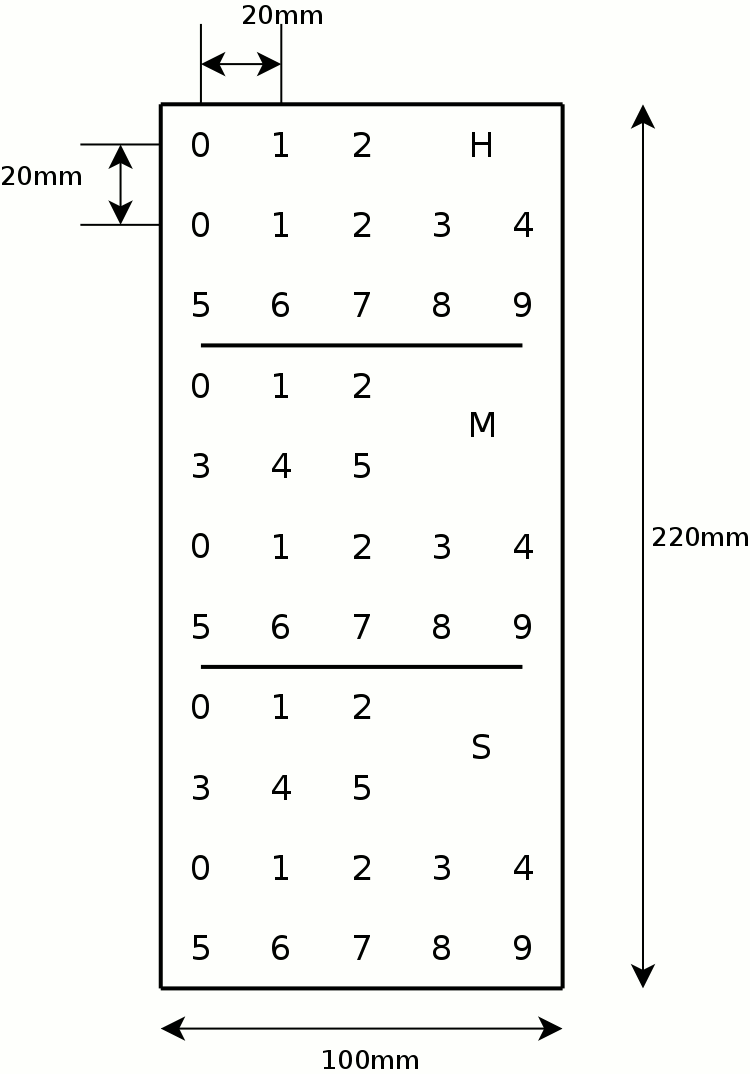I found a way to reduce the complexity of the system by using a... trick that precludes the 7 segments displays. OTOH there is no digit decoding anymore. The bonus is that it gets more roots ! And it saves some more parts (I'll have to count).
The trick is to use the Johnson counter stages directly.

This limits the kind of display/interface and that's where I have to be even more creative...
I have a couple of ideas but any suggestion is welcome :-)
Update (20160404) :
I got the drawing wrong, sorry guys ! Here it is :-)

The intended front plate is presented here :

Update (20160515): see My first discrete 5-stages Johnson counter
 Yann Guidon / YGDES
Yann Guidon / YGDES
Discussions
Become a Hackaday.io Member
Create an account to leave a comment. Already have an account? Log In.
Oh, interesting... could this be done with a 4017? Or, you'd have 20 LEDs and two would be on at a time, but no two are directly linked... hmm. err. no. oohh, but R/G LEDs would create a red-leading-green pattern...
Are you sure? yes | no
Hi !
Well look at the 4017's internal schematic : there are 10×ANDN to control positive-level outputs.
My trick is to simply get rid of the ANDN gates (saving transistors !) and compute the opposite ANDN functions with LED directly tied to the signals. I forgot to show the series resistor, but even that is shared and this reduce their number by one half.
My latest plan is to make a clock using this system, make it work well then make a new version with the 7-segments digit multiplexing. I'm still wondering how I'll implement the circuit structure and the display, I'd love to give a 1920-era style :-) I already have the orange LEDs anyway.
Are you sure? yes | no